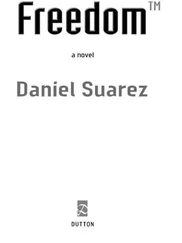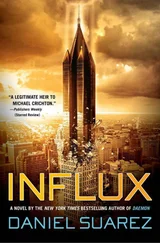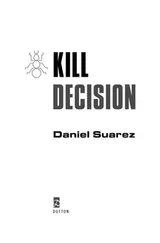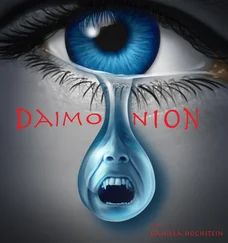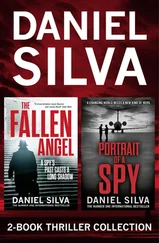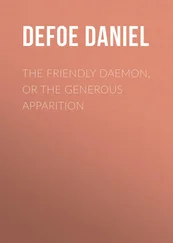Dead Computer Genius Kills Eight
Gragg clicked the link, and the extensive news coverage of the siege at Sobol’s estate unfolded before him. Gragg voraciously read every word and followed every link. An hour later and he was wide-awake again with one ‘factoid’ echoing in his mind: “…Matthew Sobol, game designer and AI architect for Over the Rhine. ”
This Sobol guy had been a genius. Beyond a genius. Gragg was rarely impressed by other people’s hacks—but this Sobol was the king. Engineering a daemon that took vengeance on the world once you were safely dead and beyond all punishment. Gragg’s mind ran through the possibilities. They were endless.
How much money had Sobol spent on this? The planning! And the Daemon was still on the loose. The Feds didn’t know how to stop it. You could hear it in the closed-lip pronouncements of the government spokespeople.
Goose bumps swept over Gragg’s skin. It felt like a new world had opened up to him. Was the Monte Cassino map just a coincidence? It had appeared in the last few days—only after Sobol’s death.
He couldn’t say that for sure, though. He’d been otherwise engaged prior to the mess with the Filipinos.
It couldn’t be a coincidence, though, could it?
Gragg knew, now more than ever, that he had to decipher the encrypted text. He felt he could never be sane again unless he knew more about the Monte Cassino map and about Sobol’s Daemon. He might have the inside track on something incredible—a new frontier in a world filled with familiar hacks, police surveillance, and drab suburban vistas. How long had it been since he’d felt a sense of wonder in his jaded soul? He was feeling that now. Was Monte Cassino Sobol’s work?
Gragg did a Web search for Monte Cassino and came up with a slew of hits—all relating to World War II. Instead, he reran the search, adding Over the Rhine as criteria. He still got about seven hundred hits, all of them historical because the Italian campaign, ultimately, was aimed toward Germany.
Gragg looked up from his laptop and stared at a desktop computer’s debug window scrolling the results of his program’s decryption attempts. Output appeared every millisecond or so and varied between gibberish and the words “Bad Data.” He sighed, realizing that encryption could even be something like a proprietary Triple DES, where the designer re-encrypted the message multiple times. Hadn’t the Russians done something like that with their Venona project? Gragg felt quicksand rising up to swallow his efforts. Would he go to his grave never knowing the answer to this riddle?
He knew a little more now, though. Didn’t he? Well, assuming that Matthew Sobol had designed the Monte Cassino map, he did. He halted the decryption program and brought up the immediate window. Gragg typed the stub of his decryption function:
?DecryptIt(
He had to supply the only argument for the function—the key to use for the encryption. His function was hard-coded to use the encrypted string he got from the Monte Cassino map along with any key he entered here as an argument for the function. It would then cycle through a dozen common decryption algorithms—DES, Triple DES, RSA—feeding the key as the variable. Gragg thought hard. What would Sobol use as a key? Gragg typed: ?DecryptIt(“MatthewSobol”)
And hit ENTER. The output was twelve lines of gibberish or “Bad Data” once again—one line for each algorithm attempted by the function. He tried scores of variations on Sobol’s name, and then variations on CyberStorm Entertainment, then variations of Over the Rhine. He started entering the names of some of the games Sobol had created—or at least ones Gragg could remember. Then the names of notable game characters, like Boerner.
The output was all gibberish.
Gragg just stared at the flat-panel monitor. He might as well curl up and die now because some bastard had placed this virus in his head, and he would never be free of it. If he ever got his hands on the Monte Cassino map designer, he was going to wring that fuck’s scrawny neck. Gragg pounded his head on the desk—not hard enough to hurt himself, but hard enough to inform his brain of the danger.
Clues. He needed to examine what would be important to someone—say, Sobol—who wanted to keep a secret away from the Feds, but who also wanted Generation Y to find it. Those Feds would no doubt be using sniffers, crackers, and decompilers in order to find encrypted strings in Sobol’s work. If not now, then soon. But they couldn’t decrypt it if they didn’t find it. Where to hide data from automated forensics tools?
Gragg had an epiphany: there was no encrypted string in the Monte Cassino map. Gragg had perceived the encrypted text, but it wasn’t really computer text; it was a graphical image—and one done in a Teutonic stone-carved font, no less. The encrypted string, “m0wFG3PRCo JVTs7JcgBwsOXb3U7yPxBB,” was an arrangement of pixels that only a human eye—or a really good optical character-recognition scanner—could interpret. Programmatically scanning the contents of this map wouldn’t uncover any encrypted text—only a human being viewing the map in the context in which it was meant to be seen could see its significance. But even within the game the significance of the coded string wasn’t truly revealed until…
Gragg smiled. Herr Oberstleutnant Boerner pointed out its significance. The combination of the picture file and Boerner’s verbal statement, “…use your key, and ve vill meet again….” —these were the components of the encryption, the data and the key to unlocking it. The more he contemplated it, the more sense it made. The data and the key appeared in proximity to each other only within the context of the game, and then only if the player was dedicated and capable enough to reach the inner sanctum of that difficult map. That probably ruled out anyone over thirty years of age. Certainly it ruled out anyone in a position of responsibility.
Excitement coursed through Gragg’s body. He had forgotten all about his exhaustion. He was hopeful again. Either that or he was headed toward madness.
If the audio file contained the key, then where was it? Was it hidden somewhere as steganographic information in the .wav format? Gragg guessed there must be hundreds of numerically named .wav files in the OTR game directory. Then he thought once again about Boerner’s words: “…use your key, and ve vill meet again….”
A mischievous smile crept across his face. It fit Boerner’s style; the invisible punctuation that only the human brain could provide:
“…use ‘your key,’ and ve vill meet again….”
Gragg took a deep breath and entered “your key” as the argument for his decryption function. He tapped the ENTER key.
Twelve output strings—all but one gibberish. All but the seventh one: RSA Decryption Result: 29.3935 -95.3933
He leapt up and howled in joy, dancing around his apartment like the sleep-deprived lunatic he was. But then a cocktail of other emotions flowed in: relief, caution, even fear. Did he dare to think this might be Sobol speaking to him? Guiding him from beyond the grave? What was Gragg setting in motion?
Gragg grabbed a remote and powered up the forty-two-inch plasma TV on the other side of the room. As he suspected, the twenty-four-hour news channels had set up live feeds from Sobol’s estate. Their cameras panned the besieging forces with night vision scopes—like a report from some foreign war. Hundreds of local and federal police surrounded the place. Heavy equipment was everywhere. A video segment of a military marksman walking toward a van with a massive sniper rifle played repeatedly in inset. The government was deadly serious about Sobol’s little game. Gragg got suddenly serious, too.
Читать дальше

